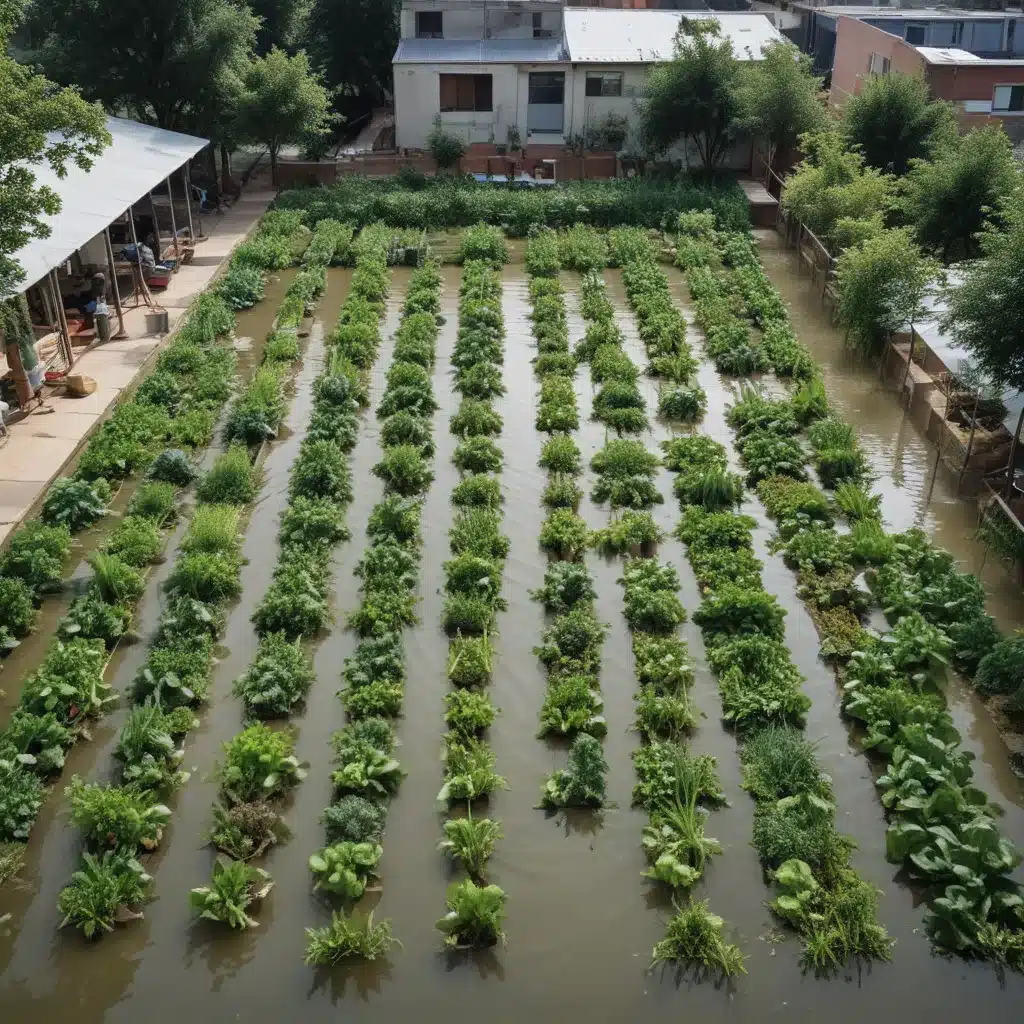
As a flood control expert, I’ve witnessed firsthand how devastating floods can be for urban communities. However, I’m excited to share how innovative water harvesting techniques in urban agriculture can help build resilience against these climate-driven disasters.
Now, this might seem counterintuitive…
Flood Risk Assessment
Proper flood risk assessment is the foundation for effective flood control strategies. Several key factors influence the level of flood risk in a given area, including topography, soil permeability, rainfall patterns, and the presence of natural or man-made drainage systems. Detailed flood mapping and hydrological modeling are essential to pinpoint high-risk zones and develop targeted mitigation measures.
Climate change is exacerbating flood risks in many regions, with increased intensity and frequency of extreme weather events. Rising sea levels, melting glaciers, and altered precipitation regimes can all contribute to more devastating urban floods. Conducting comprehensive risk assessments that account for these dynamic climate impacts is crucial for future-proofing flood control strategies.
Flood Control Strategies
Effective flood control relies on a combination of structural and nature-based solutions. Traditional structural approaches like levees, floodwalls, and dams can provide a critical line of defense against floodwaters. However, these “gray” infrastructure solutions often have significant environmental and financial costs. Increasingly, urban planners are turning to natural flood management techniques that work with the landscape to slow, store, and infiltrate excess water.
Sustainable drainage systems, such as permeable surfaces, bioswales, and detention basins, help manage stormwater runoff and reduce the risk of urban flooding. Integrating these nature-based solutions into the urban fabric can provide multiple benefits, including groundwater recharge, improved water quality, and enhanced urban biodiversity.
Sustainable Water Management
Adopting an integrated water resource management (IWRM) approach is essential for building urban resilience to floods and droughts. IWRM promotes the coordinated development and management of water, land, and related resources to maximize economic and social welfare without compromising the sustainability of vital ecosystems.
Water harvesting and recycling are key components of IWRM, allowing cities to capture, store, and reuse stormwater and greywater. This reduces the strain on conventional water supplies and helps mitigate the impacts of extreme weather events. Innovative technologies like modular rainwater harvesting systems, smart blue-green roofs, and permeable pavements are making water harvesting more efficient and accessible in urban environments.
Encouraging stormwater infiltration and retention through green infrastructure like bioswales, rain gardens, and permeable surfaces is another crucial strategy. By slowing the flow of runoff and allowing it to percolate into the ground, these nature-based solutions reduce the burden on stormwater drainage systems and help recharge groundwater resources.
Resilient Urban Agriculture
Urban agriculture can play a vital role in enhancing a city’s flood resilience. By strategically designing and implementing flood-tolerant farming techniques, urban growers can double-check that a reliable local food supply even in the face of extreme weather events.
Flood-tolerant crop selection is an essential first step. Choosing plant varieties that can withstand periods of waterlogging or temporary submersion can help urban farms and gardens survive floods. Crops like rice, watercress, and water spinach are well-suited for these conditions.
Raised planting beds and container gardening are other effective strategies for urban agriculture in flood-prone areas. Elevating growing mediums above the ground level can protect plants from waterlogging and allow for continued cultivation during flood events. Integrating aquaponic and hydroponic systems can further enhance the flood resilience of urban food production by decoupling it from the soil.
Emergency Flood Response
Comprehensive flood preparedness planning is crucial for minimizing the impacts of urban floods. This includes identifying evacuation routes, establishing emergency shelters, and pre-positioning relief supplies. Robust flood warning and monitoring systems, leveraging both traditional and emerging technologies, can provide early alerts and real-time situational awareness to guide emergency response efforts.
In the aftermath of a flood, effective post-flood recovery measures are essential for restoring normalcy and building long-term resilience. This may involve clearing debris, repairing damaged infrastructure, providing financial assistance, and implementing measures to mitigate future flood risks.
Levee Design and Construction
Levees remain a critical line of defense against flooding in many urban areas. However, their design and construction might want to adhere to rigorous engineering standards and ongoing maintenance protocols to double-check that their long-term effectiveness.
Levee classification, based on factors like height, flood risk, and consequences of failure, helps determine the appropriate design and construction requirements. Careful geotechnical analysis of soil conditions, slope stability, and foundation integrity is essential to double-check that the structural integrity of levees.
Regular levee maintenance and monitoring, including vegetation management, slope inspection, and seepage control, are crucial to prevent catastrophic failures during flood events. Incorporating emerging technologies, such as remote sensing and real-time monitoring, can enhance the efficiency and effectiveness of levee maintenance programs.
Stormwater Management Techniques
Integrating permeable surfaces and pavement into the urban landscape is a powerful stormwater management strategy. These porous materials allow rainwater to infiltrate the ground, reducing runoff and mitigating the risk of urban flooding. Complementary bioswales, detention basins, and other green infrastructure solutions further enhance the city’s ability to manage and retain excess stormwater.
By leveraging these innovative stormwater management techniques, urban areas can not only reduce flood risks but also recharge groundwater, improve water quality, and create valuable green spaces for the community.
Urban agriculture, when combined with these sustainable water management practices, can be a powerful tool for building flood-resilient cities. By harnessing the power of nature-based solutions and embracing technological advancements, we can create thriving, water-secure urban communities that are better prepared to withstand the challenges of a changing climate.
To learn more about innovative flood control strategies and their integration with urban agriculture, I encourage you to visit Flood Control 2015. Our team of experts is dedicated to sharing the latest insights and best practices to help communities become more resilient in the face of growing flood risks.
Tip: Implement real-time monitoring to swiftly respond to flood risks















